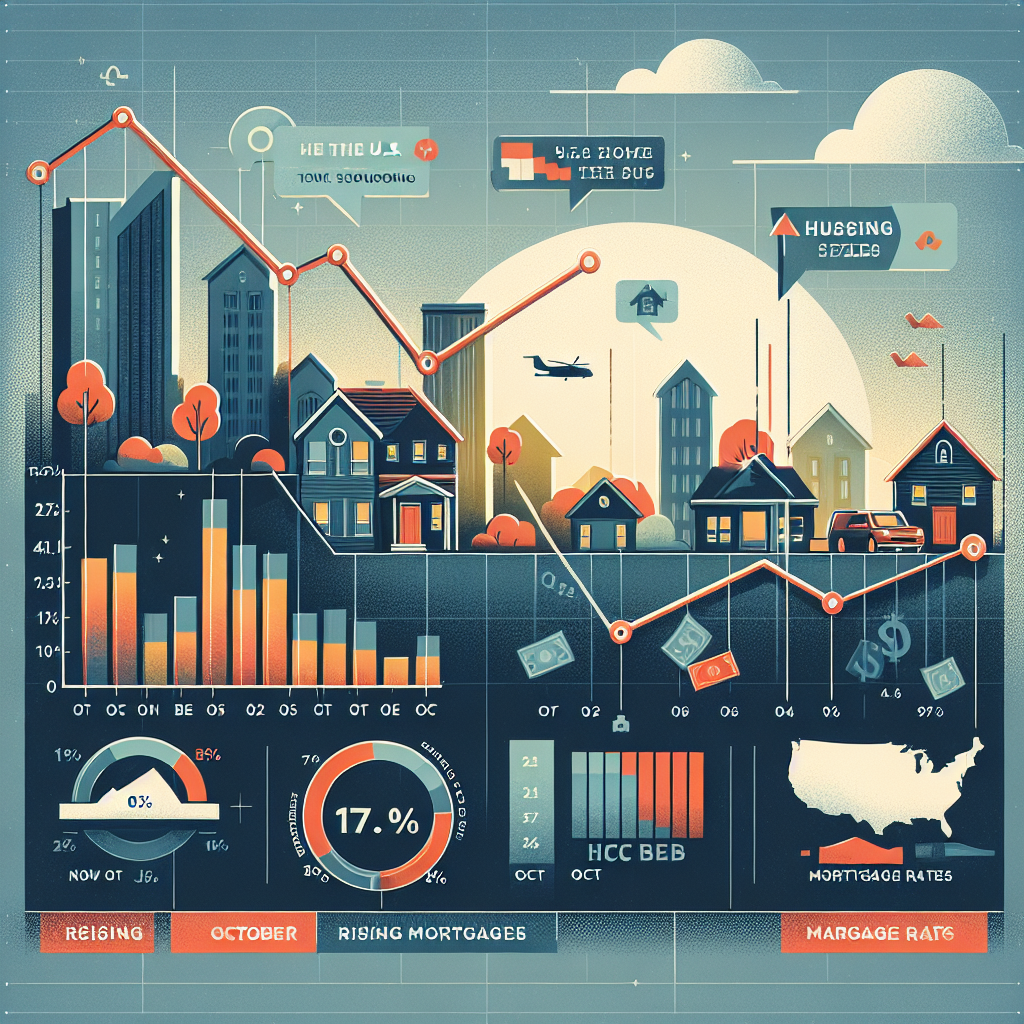Recent data from the U.S. Census Bureau reveals that new home sales in October plummeted by 17.3% compared to September, impacted by rising mortgage rates and adverse weather conditions.
According to a statement released by the U.S. Census Bureau on November 26th, new single-family home sales dropped to 610,000 units in October, marking a 17.3% decline from September. This figure also decreased by 9.4% compared to the same time last year, reaching the lowest level since November 2022.
Online real estate company Zillow attributed the decline in new home sales in October to “an unexpected rise in mortgage rates from the September lows and largely due to disruptions caused by hurricanes Helene and Milton.”
Hurricane Helene made landfall on September 26 in the Gulf Coast of Florida, bringing widespread wind and flood damage to parts of the Gulf Coast, West Florida, and North Carolina. Hurricane Milton made landfall on Siesta Key, Florida on October 9, leading to flooding and heavy rainfall across the state.
Data from the U.S. Census Bureau indicates that the Southern region experienced the largest monthly and yearly declines in new home sales in October, decreasing by 27.7% and 19.7% respectively.
Simultaneously, the average weekly rate for 30-year fixed-rate mortgages rose from 6.08% at the end of September to 6.72% by the end of October.
Zillow stated, “Mortgage rates have a significant impact on buyers’ purchasing power, and the substantial rate fluctuations are affecting affordability and sales conditions for homebuyers.”
However, Zillow noted that “the slowdown in new home sales may be temporary as income growth continues to outpace price increases – improving this part of the affordability equation, with mortgage rates still lower than the same period last year.” Zillow pointed out, “With more new constructions coming in, potential buyers have more choices, and new home sales are likely to rebound, especially in the Southern region.”
A recent report by internet real estate brokerage firm Redfin indicates that despite the rise in mortgage rates, early home buying demand has reached a 15-month high. However, there is uncertainty whether this surge is due to new demand or clearing out pending orders.
Economic research director at Redfin, Chen Zhao, suggested that the growth in demand is due to buyers waiting for the end of the U.S. presidential election. With the election uncertainties now behind, buyers are flooding into the market.
Zhao stated, “We are closely monitoring whether this is a post-election boom or if it will translate into steady growth in inventory.”
The National Association of Home Builders (NAHB) released a statement on November 18, stating that despite the high rates, builder confidence improved for the third consecutive month in November.
NAHB Chairman Carl Harris mentioned that builders are growing increasingly confident, believing that Republican governance will lead to “significant relaxation in regulation” for the construction industry, potentially boosting new home sales. He indicated a “substantial surge” in builders’ sales expectations for the next six months.
However, despite the strengthening builder confidence, the industry still faces various challenges such as ongoing labor shortages, scarcity of buildable land, and rising construction material prices, as per NAHB Chief Economist Robert Dietz.
Redfin pointed out that if economic data weakens, the Federal Reserve may accelerate interest rate cuts, potentially lowering mortgage rates.
However, in a scenario of higher inflation rates, the Fed might opt to maintain higher rates, leading to a further increase in mortgage rates. The next Federal Open Market Committee (FOMC) meeting is scheduled for December 12-13.
Based on data from the CME FedWatch tool, traders predict a 59.6% likelihood of the Fed lowering rates by 25 basis points at the December meeting.
The recently released November meeting minutes show that the Federal Reserve plans for a gradual rate cut.

